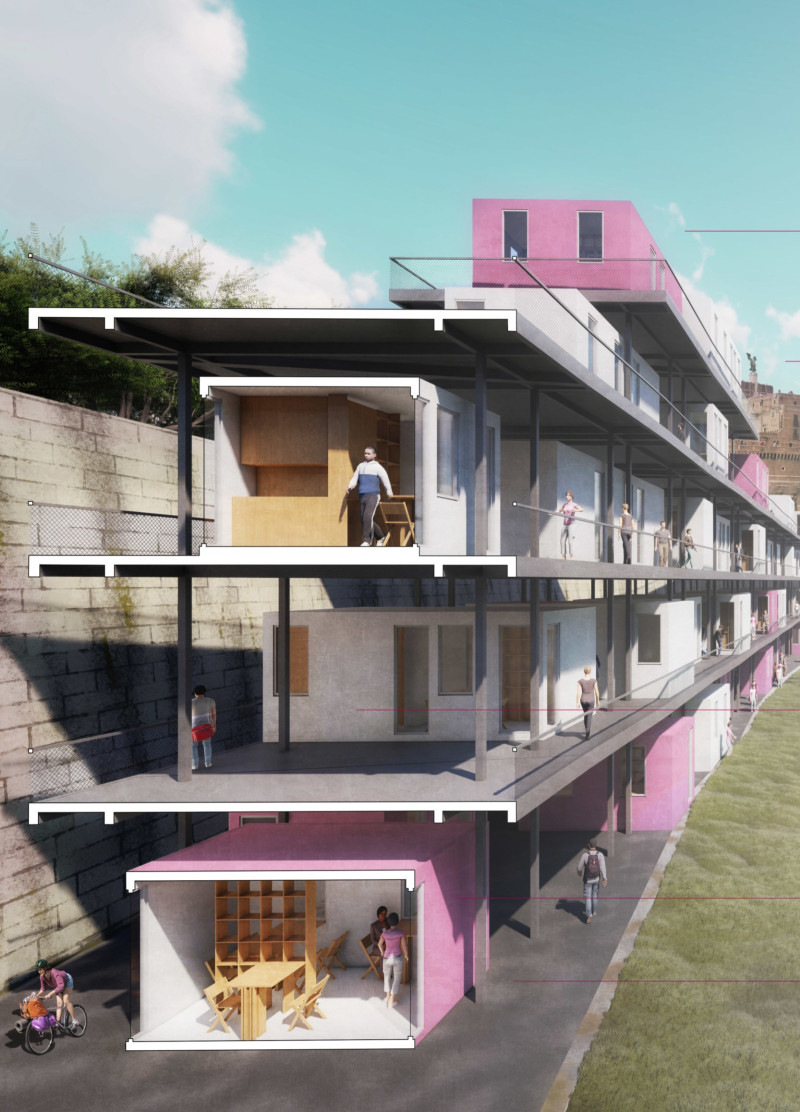5 key facts about this project
Vivadotto addresses the crucial issue of affordable living in Rome, a city rich in history and known for its distinctive urban fabric. The project explores the idea of flexible, modular housing that effectively uses existing space while considering environmental factors, such as the risk of flooding along the Tiber River. The design concept emphasizes adaptability and community, bridging the gap between modern living and the city’s architectural character.
Modular Design
The structure features a lightweight steel frame that allows for quick assembly and easy transportation of prefabricated walls, floors, and roofs. This approach not only streamlines the building process but also enables the structure to be relocated as needed. For instance, during the wet months from October to April, Vivadotto can be moved from vulnerable locations along the Tiber to safer sites, such as the Circus Maximus, demonstrating a practical response to urban challenges.
Spatial Efficiency
The design is crafted to optimize space usage in the urban environment. It can fit over both wide and narrow streets without obstructing traffic or parking. The stackable nature of the modules allows for upward growth, enabling a denser configuration as demands shift in the city. There are four types of modules that can be combined to create different living spaces—ranging from single units to larger apartments suitable for families or shared communal areas. This versatility meets various housing needs and promotes interaction among residents.
Versatile Interiors
Attention to interior design is paramount, with a focus on maximizing space through multifunctional furniture. Beds can convert into sofas, and tables can act as window blinds, providing privacy when needed or allowing for social gathering. This design choice enhances the livability of the modules, allowing spaces to adapt to the changing needs of their occupants.
The thoughtful arrangement of mobile and adaptable living solutions in Vivadotto permits it to respond effectively to the urban dynamics and the practical requirements of modern life. The project exemplifies a commitment to innovative design that prioritizes community engagement and flexibility.






































